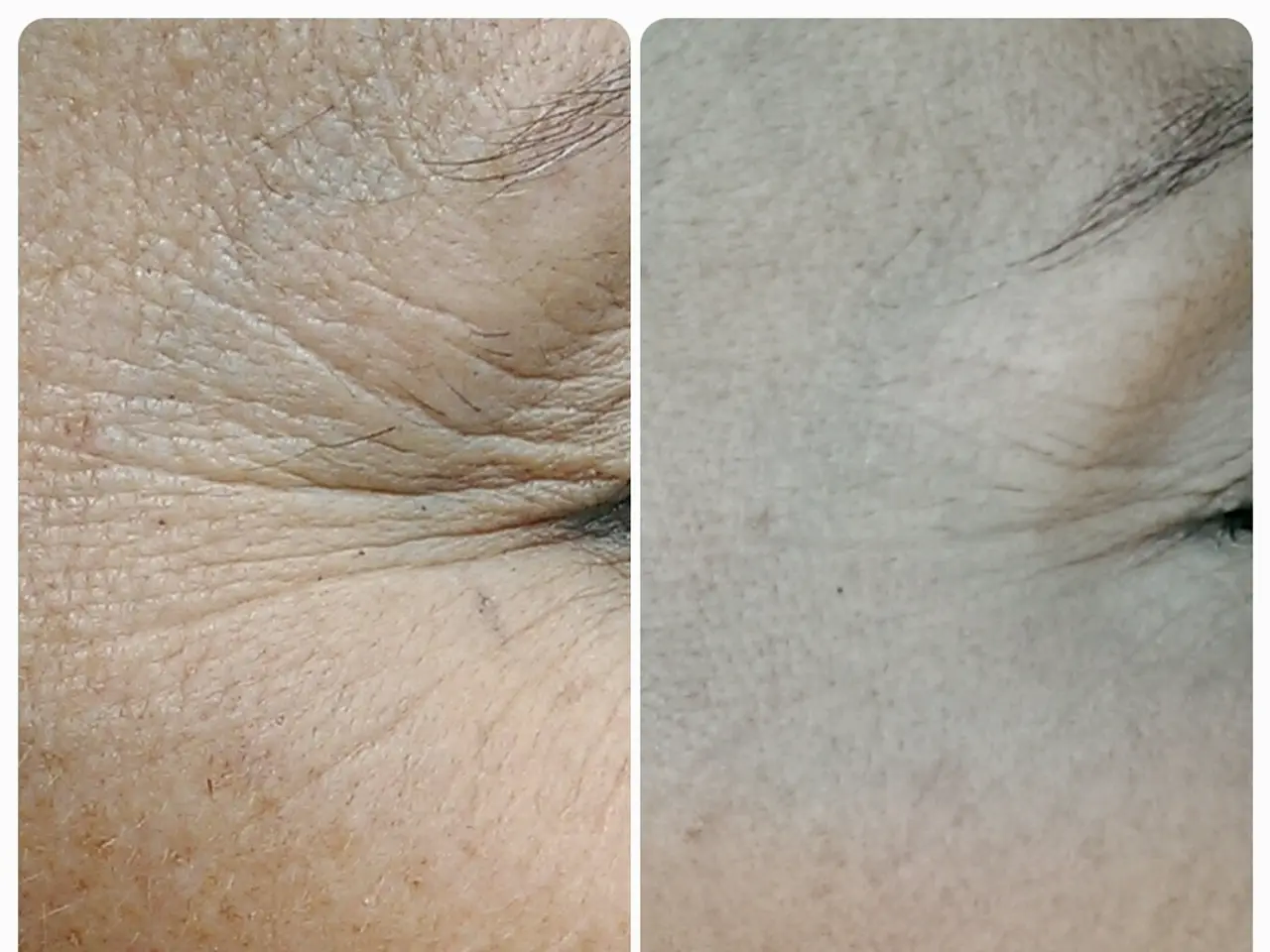Strategies for Eliminating Excess Skin Following Weight Loss
Losing a significant amount of weight is a commendable achievement, but it can leave behind unwanted loose skin. This article explores both natural and surgical methods to help minimize the appearance of sagging skin.
Natural and Non-Surgical Methods
Strength Training
Building muscle underneath the skin helps fill out areas previously supported by fat, improving skin tightness and body shape. Strength training, especially resistance exercises like squats, deadlifts, push-ups, and weightlifting, can be particularly effective [1][2][5].
Nutrition and Hydration
Eating a nutrient-rich diet with adequate protein, vitamins (C and E), minerals (zinc), and antioxidants supports collagen production and skin repair. Staying well-hydrated (8-10 glasses of water daily) maintains skin elasticity [1].
Topical Care and Supplements
Collagen-rich creams and oral supplements can contribute to mild improvement in skin firmness [1][4].
Non-Surgical Skin Tightening Treatments
Radiofrequency (RF), laser therapies, and ultrasound-based technologies (like Morpheus8, ThermiTight, Ultherapy) stimulate collagen production beneath the skin and can improve mild to moderate skin laxity over multiple sessions with minimal downtime [3][4].
Facial and Neck Exercises
Specific exercises like neck and jaw stretches or lip puckers can target localized areas such as the jawline [1].
Avoid Smoking and Sun Protection
Both smoking and excessive sun exposure can damage the skin, so it's essential to avoid smoking and protect the skin from sun damage [4].
Surgical Options
For more significant sagging where non-surgical methods are insufficient, surgical skin removal and tightening procedures offer immediate and marked improvement:
Tummy Tuck (Abdominoplasty)
Removes excess abdominal skin and fat and tightens underlying muscles [2][3].
Body Lift
Addresses multiple areas—abdomen, thighs, buttocks, and lower back—by removing excess skin and fat and tightening tissues [2].
Arm Lift (Brachioplasty)
Removes sagging skin on upper arms [2][3].
Thigh Lift
Removes excess skin and fat from the thighs [2][3].
Surgical procedures require recovery time but deliver long-lasting improvement and should be performed by board-certified plastic surgeons [2][3][4].
Additional Insights
Recent clinical research shows that skin can rebuild collagen and elasticity significantly even later in life, indicating that dedicated, consistent natural methods can yield noticeable results [5]. However, outcomes vary depending on age, amount of weight lost, and individual skin elasticity.
Summary
Start with strengthening muscles through resistance training, optimize nutrition and hydration, and consider non-invasive skin tightening treatments. For advanced sagging, consult a plastic surgeon about surgical skin removal options. Maintain a stable weight, protect skin from sun exposure, and avoid smoking to preserve skin quality. These approaches collectively help minimize loose skin appearance after significant weight loss [1][2][3][4][5].
- Strength training, particularly resistance exercises like squats, deadlifts, push-ups, and weightlifting, help fill out areas with loose skin due to weight loss by building muscle underneath.
- Eating a nutrient-rich diet that includes adequate protein, vitamins (C and E), minerals (zinc), and antioxidants supports collagen production and skin repair, which can improve sagging skin.
- Collagen-rich creams, oral supplements, and non-surgical skin tightening treatments like radiofrequency (RF), laser therapies, and ultrasound-based technologies (such as Morpheus8, ThermiTight, and Ultherapy) can provide mild to moderate skin firmness improvements.
- Facial and neck exercises, like neck and jaw stretches or lip puckers, can target specific areas, such as the jawline, for improved skin tightness.
- Avoiding smoking and excessive sun exposure can minimize damage to the skin and aid in preserving its quality and elasticity.
- Tummy tucks (Abdominoplasty), body lifts, arm lifts (Brachioplasty), and thigh lifts are surgical procedures that remove excess skin and fat and tighten tissues, offering immediate and marked improvements for significant sagging that non-surgical methods can't address.
- Surgical procedures require recovery time but provide long-lasting improvement; they should be performed by board-certified plastic surgeons.
- Dedicated, consistent natural methods, such as strength training, proper nutrition, and hydration, combined with non-invasive treatments like topical care, supplements, and non-surgical skin tightening can yield noticeable results even later in life, as indicated by recent clinical research.




